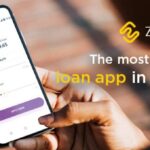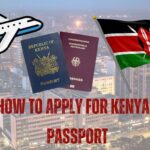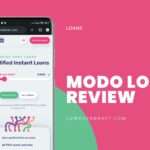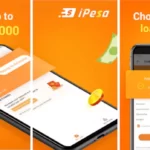Only a few options are available when you require a quick cash loan. One option is to apply for a personal loan through a traditional bank, which may be lengthy, including a great deal of paperwork and many document submissions.
Another option is to take out a credit card loan; however, the interest rates are exceedingly expensive. Another alternative is to ask your friends or relatives for money, although this might be embarrassing. And not everyone in Kenya is fortunate enough to receive a salary advance loan from their work. As a result, personal loan apps are the most outstanding alternative for a rapid cash loan in Kenya.
Having a personal loan app is excellent, but you can request loans via USSD codes or SMS if you don’t have an Android phone.
The Internet has changed the way Kenyans do business. You can now order everything from vegetables to a Smart TV from the comfort of your own home. The scenario is similar if you require quick and easy immediate personal loans in Kenya.
This article shows you how to get quick loans using USSD codes and all the Kenya mobile loans available via USSD codes or SMS.
Without further ado, let’s dive in.
List of USSD codes in Kenya
The complete USSD codes for loans in Kenya are listed here. Bank USSD codes, telecommunication USSD codes, and other financial organization USSD codes are included in the list.
- Bayes (*879*99#)
- HF Whizzy (*618#)
- KCB M-PESA (*844#)
- ExtendMoney (*676#)
- Kopa Doh (*610#)
- Hela247 (*871#)
- M-Fanisi (*281#)
- Cash Xpress (*241#)
- Kwft (*692#)
- Rafiki (*366#)
- Okoa Sasa (*884#)
- Okoa Mia (*628#))
- Maisha/Mfanisi (*281#)
- Okoa Theo (*660#)
- Okolea (*842#)
- Pesa Peta (*269#)
- Pesa Chapchap/Faulu (*339#)
- Pewa (*133#)
- Pezecha (Text “Pezecha” to “22235”)
- Uwezo (*243*99#)
- Sotiwa (*243*90#)
- Timiza (*848#)
- Musoni (*279#)
- Caritas (*810#)
- Zazipay (*322#)
- Zenka (*841#)
- Key/Remu (*356#)
- Sumac (*882#)
- U&I (*356#)
- SMEP (*741#)
- FinCredit (*424#)
- Progressive Credit (*443#)
- XtendMoney (*676#)
What is USSD
USSD, or Unstructured Supplementary Service Data, is a communication protocol used by mobile network operators to send and receive text-based information between a mobile device and a service provider’s computer. Unlike SMS (Short Message Service), which stores messages in the device’s inbox, USSD is session-based and typically does not leave a record on the user’s phone. Instead, it establishes a real-time connection between the mobile device and the service provider’s system.
USSD codes, often starting with a * and ending with a #, are used to access various services and features provided by mobile network operators. These codes are user-friendly and offer quick access to functions such as checking account balances, recharging prepaid mobile credit, and activating/deactivating services like call forwarding or data bundles.
USSD is known for its simplicity and speed, making it an efficient way to deliver information and services, especially in regions with limited internet connectivity. It is widely used for mobile banking, mobile money transfers, and other interactive services, as it can work on even the most basic mobile phones.
What is USSD Banking?
USSD banking in Kenya is a popular and widely adopted mobile banking service offered by banks and financial institutions in the country. It allows Kenyan bank customers to access a range of financial services and conduct transactions using Unstructured Supplementary Service Data (USSD) codes on their mobile phones. This service is especially significant in Kenya due to its role in promoting financial inclusion and offering convenient access to banking services.
With USSD banking in Kenya, customers can perform various tasks such as checking account balances, transferring money to other accounts, paying bills, buying airtime or data bundles, and even accessing loans or savings accounts. To use USSD banking, customers dial a specific code (e.g., *123#) and follow the prompts on their mobile phones to complete transactions securely, without the need for internet connectivity.
This service has played a crucial role in expanding financial access to rural and underserved areas of Kenya, where traditional brick-and-mortar banking infrastructure may be limited. USSD banking has become an integral part of Kenya’s mobile money ecosystem and has contributed significantly to the country’s financial inclusion efforts.
How to Apply For Loans Using USSD Codes in Kenya
You can simply borrow loans from any vendor in Kenya by dialing a code, but there are a few things you need to know/do before applying for loans so that you don’t have a bad credit score, especially with Credit Reference bureaus (CRB)
- First of all, you need to know the loan provider, the interest rate, the loan repayment term, the loan limit, and the terms and conditions.
- Next, Sign up with the loan provider. You may not need to register with your bank or network provider and provide some banking information and your National ID. Some loan provider allows you to register via the USSD code by following the prompts that follow after dialing the code. Others will require you to register first via their website or mobile app before you can utilize the USSD codes.
- After successful registration, you can now utilize the USSD code to request for loan.
- You just need to dial the code and follow the prompt.
- Allow time for approval.
- Get your loan in your M-Pesa Account or any other mobile money wallet.
Requirements for Getting Loans Using a USSD Code
As we mentioned earlier, you will need to first register with one of the loan providers listed above before you can apply for a loan. The registration process can be done via the USSD code or via the loan provider’s website or mobile app, but you will need to meet their requirements before the loan can be provided to you.
You do not need to create an account with any banks or network providers you already have an account with. However, registration is required for some financial companies that do not have any information about you. The majority of these financial institutions require the following;
- Your Personal Details: Some loan providers will request you provide your personal information like your full name, date of birth, state and country of origin, etc.
- Age: You must be at least 18 years old to qualify for a loan in Kenya.
- Valid Identification: You will need a valid government-issued ID, such as a national ID card, passport, or driver’s license.
- Safaricom Phone Number: Many of the loan providers that utilize USSD will want you to apply using a Safaricom Phone number.
- M-Pesa account or Mobile Wallet: You will need to provide an M-Pesa account or mobile wallet to which your loan will be disbursed.
Some other requirements that may be asked include:
- Source of Income: Most lenders will require proof of a stable source of income, which could be a payslip if you are employed, or evidence of business income if you are self-employed.
- Bank Account: You will need an active bank account where the loan funds can be disbursed and repayments can be made.
- Credit History: Some lenders may check your credit history with the Credit Reference Bureau (CRB) to assess your creditworthiness. A positive credit history can improve your chances of loan approval.
- Loan Purpose: You may need to specify the purpose of the loan, such as business expansion, education, medical expenses, or personal needs.
- Loan Application Form: You will need to fill out a loan application form provided by the lender, providing accurate and complete information.
- Loan Terms: Familiarize yourself with the terms and conditions of the loan, including interest rates, repayment schedule, and any associated fees.
Make sure you check the interest rate offered by the loan provider and stay away from anyone who may charge you a lot rate.

